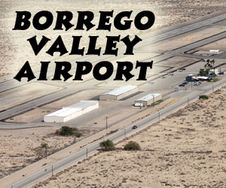Palm Canyon Recovery
Last updated 3/5/2020 at 9:45am
There could be nothing good from the dark smoke rising out of Palm Canyon west of town. Borrego Springs visitors and residents alike knew something bad was happening last month as fire engines raced through town and helicopters began scooping water from the pond at the de Anza Desert Club.
The iconic first grove of palm trees in Palm Canyon was on fire. The cause of the fire is still unknown, but according to many reports, the fire may have been started by a juvenile traveling with a big group, whose name is being withheld.
For many visitors to Borrego Springs, that grove defines what they see when they think of Anza-Borrego Desert State Park. Thousands make the short hike into the canyon each year to enjoy this rare and beautiful place.
Destruction of the palms set carelessly on fire by an unidentified youngster was beyond thinkable.
In addition to its popularity as a visitor attraction, the shaded groves of Palm Canyon are an important habitat for bighorn sheep, bats, hawks, owls and other birds as well as insects, spiders, and reptiles. But there is hope that all has not been lost in Palm Canyon.
The professionals who protect California's largest state park are hopeful that as many as 75 percent of the palms will recover from dam-age incurred by the rapidly moving flames. There are already indications that many of the burned palms are sprouting, along with other native vegetation. Frogs, insects and bighorn sheep have also started to return.
In areas where the fire was most intense, root systems and the palm hearts may have been destroyed and those trees will have to be removed as a safety measure.
Recovery will take time and during that process extra protection is needed to prevent the area from being "loved to death." Ultimately this tragic incident will bring greater understanding of recovery from wildfire and the man responsible for leading the effort is Danny McCamish, senior environmental scientist for Anza-Borrego Desert State Park. He has a big job.
"We understand that upwards of 18,000 people a year walk that trail and it's a big deal for Anza-Borrego visitors," McCamish said. "We are not taking this lightly and we want it to recover and be even better than it was."
For now, the Palm Canyon trail-head parking lot and trail is completely closed to visitors until lingering embers are out and any dangers or safety hazards of falling trees have been eliminated.
Park Superintendent Ray Lennox said the goal is to soon reopen the two trails into the canyon to a point where they meet below the palm groves.
"People will be able to see the grove from there and we will have volunteers or staff on hand to pro-vide interpretive information," Lennox said.
There's good reason to keep visitors out of the palm grove during recovery. McCamish explained that the ground cleared by the fire is fragile and thousands of visitors randomly walking on it would inhibit or even prevent the return of native plants.
McCamish said the bare soil after the fire is very fragile and too many people walking there could compact the ground, making it impossible for new plants to grow.
"As few at 20 or 30 people walking in the same area can compact the soil, creating a path where nothing grows, and we don't want that," McCamish said.
Restricting public access during recovery will give plants a chance to grow back as quickly as possible. Then appropriate pathways can be established. History and how palms grow is also a source of optimism for the return of the palms.
The heart of the palm is at the very top and new growth is produced there. The key to new growth will be if that part of the tree survived. The trunk of a palm is filled with water and this helps protect the heart of the tree. Only trees exposed to extreme temperatures for a longer time will not survive.
The dried palm fronds, or skirt that burned produced a flash fire that only lasted a relatively short time.
Full article in the Feb. 20 issue of the Borrego Sun.








